The father of tears and laughter
Thou didst drink the stale of horses and the guilded puddle which beasts would cough at
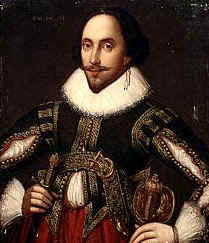 England's greatest poet and playwright was born at Stratford-upon-Avon, the son of a tradesman and Alderman of Stratford, John Shakespeare in 1564. William, the eldest son, and third child (of eight) was baptised on 26th April 1564 and probably educated at Stratford Grammar School, but little is known of his life up to his eighteenth year. He did not go to University and his younger contemporary and fellow-dramatist, Ben Johnson, would later speak disparagingly of his "small Latin, and less Greek" in the eulogy prefaced to the Firs Folio. However the Grammar School curriculum would have provided a formidable linguistic, and to some extent literary, education.
England's greatest poet and playwright was born at Stratford-upon-Avon, the son of a tradesman and Alderman of Stratford, John Shakespeare in 1564. William, the eldest son, and third child (of eight) was baptised on 26th April 1564 and probably educated at Stratford Grammar School, but little is known of his life up to his eighteenth year. He did not go to University and his younger contemporary and fellow-dramatist, Ben Johnson, would later speak disparagingly of his "small Latin, and less Greek" in the eulogy prefaced to the Firs Folio. However the Grammar School curriculum would have provided a formidable linguistic, and to some extent literary, education.
Although, in 1575 when he was eleven, there was a great plague in the country and Queen Elizabeth journeyed out of London to avoid its consequences and stayed for several days at Kenilworth Castle near Stratford enjoying "festivities" arranged by her host Lord Leicester. It is probable these events may have made a strong impact on the mind of young William.
At the age of Eighteen, he married Anne Hathaway, eight years his senior. Five years later he left for London. William worked at the Globe Theatre and appeared in many small parts. He first appeared in public as a poet in 1593 with his Venus and Adonis and the following year with The Rape of Lucrece. He became joint proprietor of The Globe and also had an interest in the Blackfriars Theatre.
The play writing commenced in 1595 and of the 38 plays that comprise the Shakespeare Cannon, 36 were published in the 1st Folio of 1623, of which 18 had been published in his lifetime in what are termed the Quarto publications.
Love's Labour's Lost and The Comedy of Errors appear to be among the earliest, being followed by The Two Gentlemen of Verona and Romeo and Juliet. Then followed Henry VI, Richard III, Richard II, Titus Andronicus, The Taming of the Shrew, King John, The Merchant of Venice, A Midsummer Night's Dream, All's Well that Ends Well, Henry IV, The Merry Wives of Windsor, Henry V, Much Ado about Nothing, As you like it, Twelth Night, Julius Caesar, Hamlet, Troilus and Cressida, Othello, Measure for Measure, Macbeth, King Lear, Timon of Athens, Pericles, Antony and Cleopatra, Coriolanus, Cymbeline, A Winter's Tale, The Tempest, Henry VIII and The Two Noble Kinsmen.
When he retired from writing in 1611, he returned to Stratford to live in a house which he had built for his family. His only son, Hamnet died when still a child. He also lost a daughter Judith (twin to Hamnet), but his third child Susanna married a Stratford Doctor, John Hall and their home "Hall's Croft" is today preserved as one of the Shakespeare Properties and administered by the Shakespeare Birthplace Trust.
In 1616 Shakespeare was buried in the Church of the Holy Trinity the same Church where he was baptised in 1564. Tradition has it that he died after an evening's drinking with some of his theatre friends.
His gravestone bears the words:-
|
Good frend for Jesus sake forebeare,
to digg the dust encloased heare,
Bleste be ye man yt spares thes stones,
And curst be he yt moves my bones.
Macbeth
Hath borne his faculties so meek, hath been
So clear in his great office, that his virtues
Will plead like angels, trumpet-tongued against
The deep damnation of his taking-off;
And pity, like a naked new-born babe
Striding the blast, or heaven's cherubin horsed
Upon the sightless couriers of the air,
Shall blow the horrid deed in every eye
That tears shall drown the wind.
|
Shakespearean Theatre
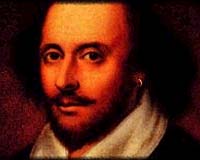 Before Shakespearešs time and during his boyhood, troupes of actors performed wherever they could in halls, courts, courtyards, and any other open spaces available. However, in 1574, when Shakespeare was ten years old, the Common Council passed a law requiring plays and theaters in London to be licensed. In 1576, actor and future Lord Chamberlain's Man, James Burbage, built the first permanent theater, called "The Theatre", outside London city walls. After this many more theaters were established, including the Globe Theatre, which was where most of Shakespeare's plays premiered.
Before Shakespearešs time and during his boyhood, troupes of actors performed wherever they could in halls, courts, courtyards, and any other open spaces available. However, in 1574, when Shakespeare was ten years old, the Common Council passed a law requiring plays and theaters in London to be licensed. In 1576, actor and future Lord Chamberlain's Man, James Burbage, built the first permanent theater, called "The Theatre", outside London city walls. After this many more theaters were established, including the Globe Theatre, which was where most of Shakespeare's plays premiered.
Elizabethan theaters were generally built after the design of the original Theatre. Built of wood, these theaters comprised three tiers of seats in a circular shape, with a stage area on one side of the circle. The audience's seats and part of the stage were roofed, but much of the main stage and the area in front of the stage in the center of the circle were open to the elements. About 1,500 audience members could pay extra money to sit in the covered seating areas, while about 800 "groundlings" paid less money to stand in this open area before the stage. The stage itself was divided into three levels: a main stage area with doors at the rear and a curtained area in the back for "discovery scenes"; an upper, canopied area called "heaven" for balcony scenes; and an area under the stage called "hell," accessed by a trap door in the stage. There were dressing rooms located behind the stage, but no curtain in the front of the stage, which meant that scenes had to flow into each other, and "dead bodies" had to be dragged off.
Performances took place during the day, using natural light from the open center of the theater. Since there could be no dramatic lighting and there was very little scenery or props, audiences relied on the actors' lines and stage directions to supply the time of day and year, the weather, location, and mood of the scenes. Shakespeare's plays masterfully supply this information . For example, in Hamlet the audience learns within the first twenty lines of dialogue where the scene takes place ("Have you had quiet guard?"), what time of day it is ("'Tis now strook twelf"), what the weather is like ("'Tis bitter cold"), and what mood the characters are in ("and I am sick at heart").
One important difference between plays written in Shakespeare's time and those written today is that Elizabethan plays were published after their performances, sometimes even after their authors' deaths, and were in many ways a record of what happened on stage during these performances rather than directions for what should happen. Actors were allowed to suggest changes to scenes and dialogue and had much more freedom with their parts than actors today. Shakespeare's plays are no exception. In Hamlet, for instance, much of the plot revolves around the fact that Hamlet writes his own scene to be added to a play in order to ensnare his murderous father.
Shakespeare's plays were published in various forms and with a wide variety of accuracy during his time. The discrepancies between versions of his plays from one publication to the next make it difficult for editors to put together authoritative editions of his works. Plays could be published in large anthologies called Folios (the First Folio of Shakespeare's plays contains 36 plays) or smaller Quartos. Folios were so named because of the way their paper was folded in half to make chunks of two pages each which were sewn together to make a large volume. Quartos were smaller, cheaper books containing only one play. Their paper was folded twice, making four pages. In general, the First Folio is of better quality than the quartos. Therefore, plays that are printed in the First Folio are much easier for editors to compile.
Although Shakespeare's language and classical references seem archaic to some modern readers, they were commonplace to his audiences. His viewers came from all classes, and his plays appealed to all kinds of sensibilities, from "highbrow" accounts of kings and queens of old to the "lowbrow" blunderings of clowns and servants. Even his most tragic plays include clown characters for comic relief and to comment on the events of the play. Audiences would have been familiar with his numerous references to classical mythology and literature, since these stories were staples of the Elizabethan knowledge base. While Shakespearešs plays appealed to all levels of society and included familiar story lines and themes, they also expanded his audiences' vocabularies. Many phrases and words that we use today, like "amazement," "in my mind's eye," and "the milk of human kindness" were coined by Shakespeare. His plays contain a greater variety and number of words than almost any other work in the English language, showing that he was quick to innovate, had a huge vocabulary, and was interested in using new phrases and words.
Shakespeare movies
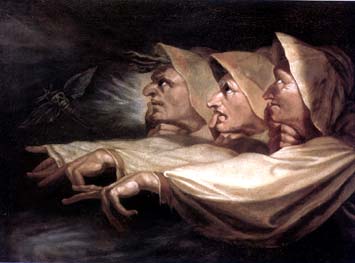 Shakespeare movies are so numerous, they form their own sub genre. With over 250 Shakespeare movies produced, Shakespeare film adaptations such as Baz Luhrman's "Romeo and Juliet", the Shakespeare inspired "Shakespeare in Love" and the more recent "Hamlet 2000", prove that Shakespeare films adaptations and movies retain their enduring appeal.
As an example of Shakespeare's enduring popularity, sixty one film adaptations and twenty one TV adaptations alone have been made of Hamlet, the earliest being in 1907 and the latest in 2000. A chronological compilation of the most notable adaptations follows:
Shakespeare movies are so numerous, they form their own sub genre. With over 250 Shakespeare movies produced, Shakespeare film adaptations such as Baz Luhrman's "Romeo and Juliet", the Shakespeare inspired "Shakespeare in Love" and the more recent "Hamlet 2000", prove that Shakespeare films adaptations and movies retain their enduring appeal.
As an example of Shakespeare's enduring popularity, sixty one film adaptations and twenty one TV adaptations alone have been made of Hamlet, the earliest being in 1907 and the latest in 2000. A chronological compilation of the most notable adaptations follows:
The Taming of the Shrew, (1929), featuring Douglas Fairbanks and Mary Pickford.
Romeo and Juliet, (1935). Directed by George Cukor.
A Midsummer Night's Dream, (1935). Directed by Max Reinhardt and William Dieterle.
As You Like It, (1936). Directed by Paul Czinner.
Henry V, (1945). Directed by Lawrence Olivier.
Macbeth, (1948). Directed by Orson Welles (War of the Worlds, Animal Farm, 1984).
Hamlet, (1948). Directed. by Lawrence Olivier.
Othello, (1952). Directed by Orson Welles.
Julius Caesar, (1953). Directed by Joseph L. Mankiewicz.
Romeo and Juliet, (1954). Directed by Renato Castellani.
Richard III, (1955). Directed by Lawrence Olivier.
Othello, (1956). Directed by Sergei Jutkevitsh.
Forbidden Planet (based on The Tempest), (1956). Directed by Fred M. Wilcox.
Throne of Blood / The Castle of the Spider's Web / Cobweb Castle (1957), (derived from Macbeth). Directed by Akira Kurosawa.
The Tempest (1960), (TV) starring Richard Burton. Directed by George Schaefer.
Hamlet (1964), starring Richard Burton. Directed by Bill Colleran and John Gielgud.
Hamlet, (1964), directed by Grigori Kozintsev.
The Taming of the Shrew, (1967), starring Elizabeth Taylor and Richard Burton. Directed by Franco Zeffirelli.
Romeo and Juliet, (1968), directed by Franco Zeffirelli.
King Lear, (1970), directed by Peter Brook.
King Lear, (1970), directed by Grigori Kozintsev.
Macbeth, (1972), directed by Roman Polanski (Bitter Moon).
Antony and Cleopatra, (1974), starring Patrick Stewart and Ben Kingsley. Directed by Trevor Nunn and John Schoffield.
Comedy of Errors (1978), starring Judi Dench and Francesca Annis and directed by Philip Casson and Trevor Nunn.
Hamlet, Prince of Denmark, (1980), (BBC-TV) starring Patrick Stewart and directed by Rodney Bennett.
The Merry Wives of Windsor, (1982), (BBC-TV), starring Ben Kingsley and directed by David Hugh Jones.
The Tempest, (1982), directed by Paul Mazursky.
Ran (1985), (based on King Lear), directed by Akira Kurosawa.
King Lear, (1987), directed by Jean-Luc Godard.
Henry V, (1989), directed by Kenneth Branagh.
Romeo and Juliet, (1990), starring Francesca Annis, Vanessa Redgrave and Ben Kingsley. Directed by Armando Acosta II.
Hamlet, (1991), directed by Franco Zeffirelli.
Prospero's Books, (1991), (based on The Tempest), directed by Peter Greeneway.
As You Like It, (1992), directed by Christine Edzard.
Much Ado about Nothing, (1993), directed by Kenneth Branagh.
Othello, (1995), directed by Oliver Parker.
William Shakespeare's Romeo and Juliet, (1996), starring Leonardo Di Caprio and Claire Danes. Directed by Baz Luhrman.
Hamlet, (1996), starring Kenneth Branagh, Richard Attenborough, Judi Dench, Billy Crystal and Kate Winslet. Directed by Kenneth Branagh.
Twelfth Night, (1996), starring Helena Bonham Carter, Nigel Hawthorne, Ben Kingsley, Imogen Stubbs and Mel Smith. Directed by Trevor Nunn.
Looking for Richard, (1996), directed by Al Pacino.
Shakespeare in Love, (1998), starring Gwyneth Paltrow, Geoffrey Rush and Judi Dench. Directed by John Madden, written by Marc Norman and Tom Stoppard. Loosely inspired by Cesario / Viola of Twelfth Night Or What You Will and Romeo and Juliet.
10 Things I Hate About You, (1999), (based on The Taming of the Shrew), starring Julia Stiles and Heather Ledge. Directed by Gil Junger.
A Midsummer's Night's Dream, (1999), starring Calista Flockhart, Michelle Pfeiffer. Directed by Michael Hoffman.
Love's Labour's Lost, (2000), directed by Kenneth Branagh.
Hamlet 2000, starring Ethan Hawke, Julia Stiles, Kyle MacLachlan. Directed by Michael Almereyda.
|
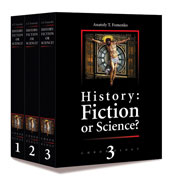
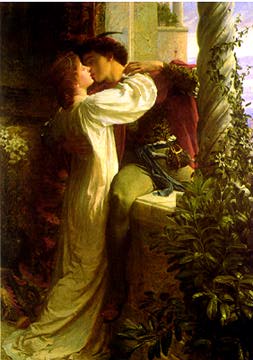


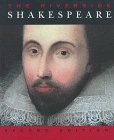
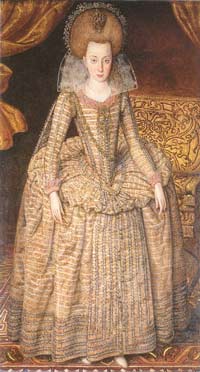



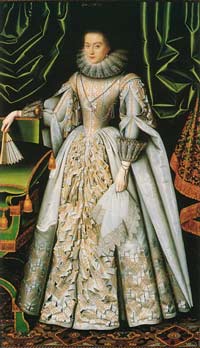
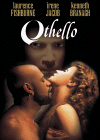
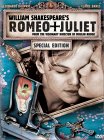
 View great Shakespeare movies
View great Shakespeare movies 

